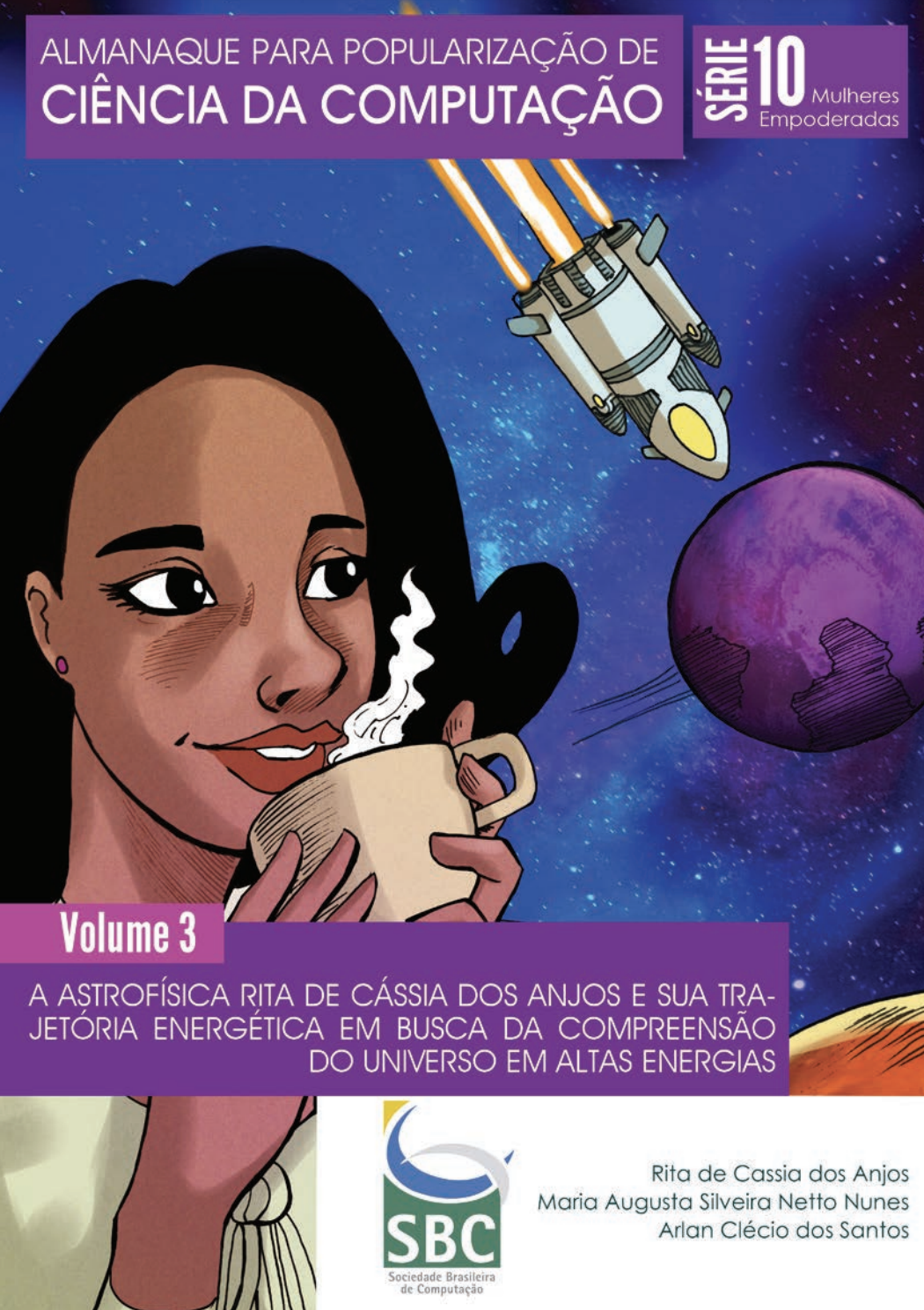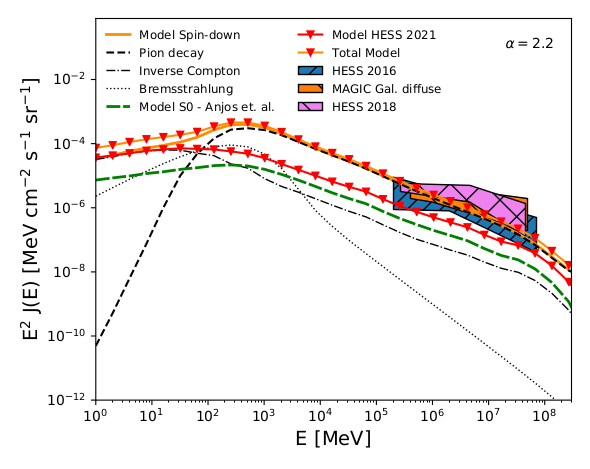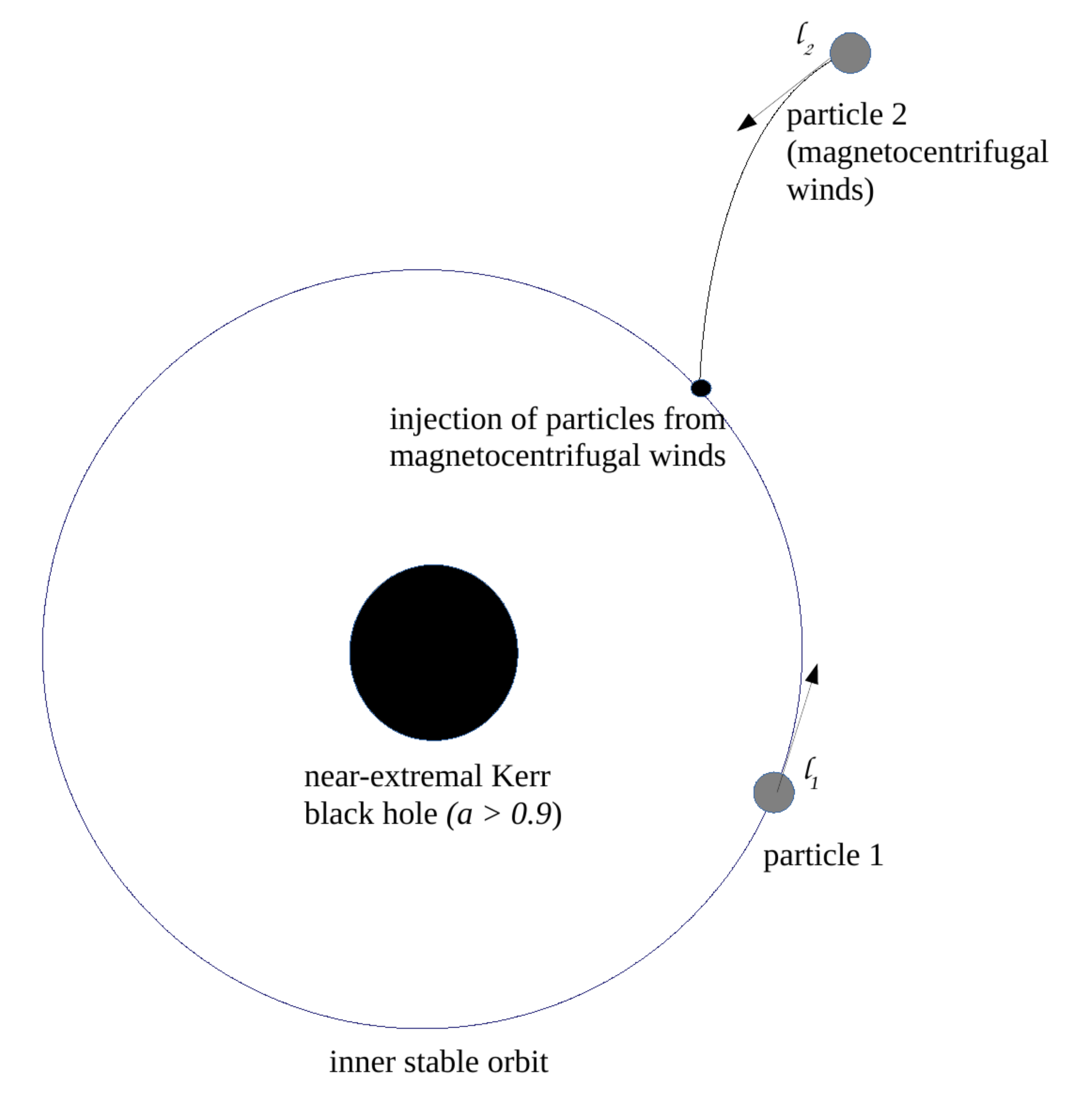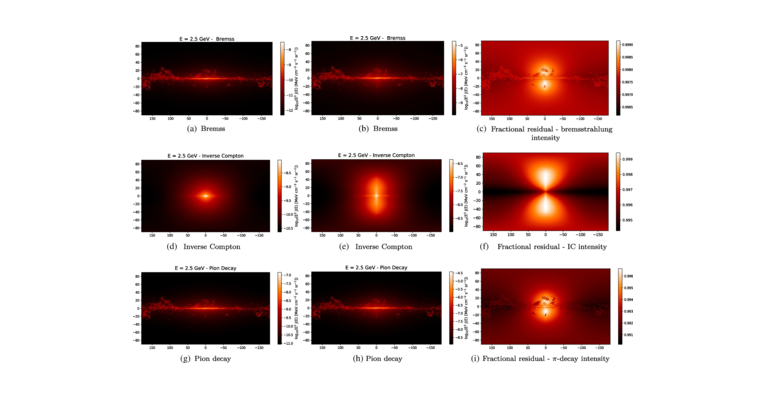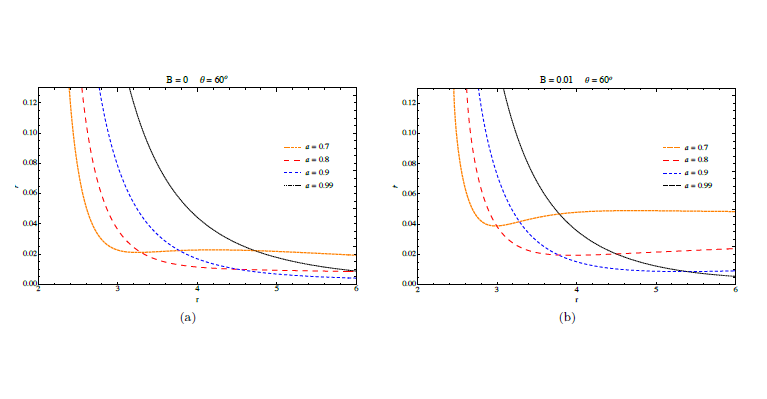An updated view and perspectives on high-energy gamma-ray emission from SGR J1935+2154 and its environment
Jaziel G. Coelho, Luana N. Padilha, Rita C. dos Anjos, Cynthia V. Ventura and Geanderson A. Carvalho. JCAP 10 041 2022
In one of our previous articles, we investigated the contribution to high-energy and very high-energy gamma-ray emission (VHE, E > 100 GeV) due to cosmic-ray acceleration of SNR G57.2+0.8 hosting SGR J1935+2154 using the GALPROP propagation code. However, follow-up observations of SGR 1935+2154 were made for 2 hours on April 28, 2020, using the High Energy Stereoscopic System (H.E.S.S.). We obtain a hadronic model that confirms the results discussed by H.E.S.S. . This leads to an optimistic prospect that cosmic ray gamma rays from SGR J1935+2154 can contribute to the overall gamma energy density distribution and in particular to the diffusion gamma rays from the Galactic center.

